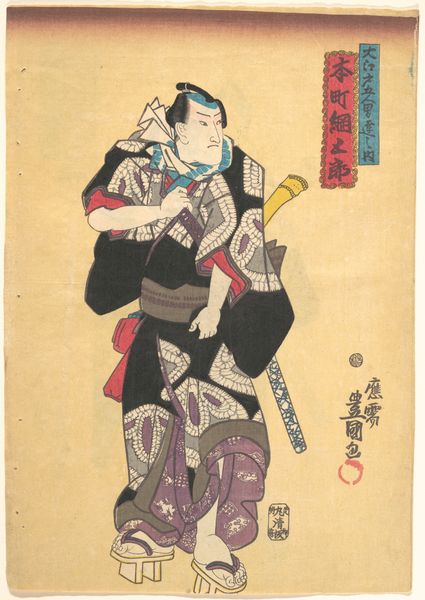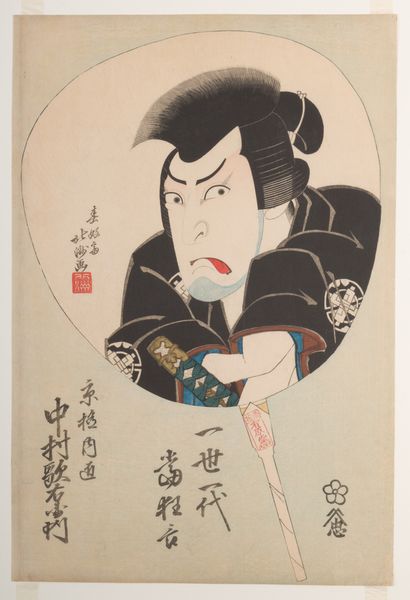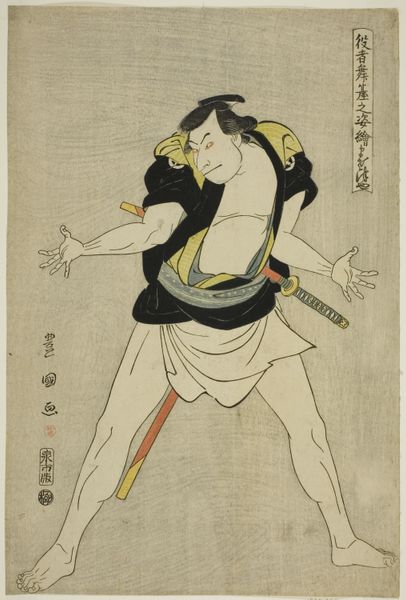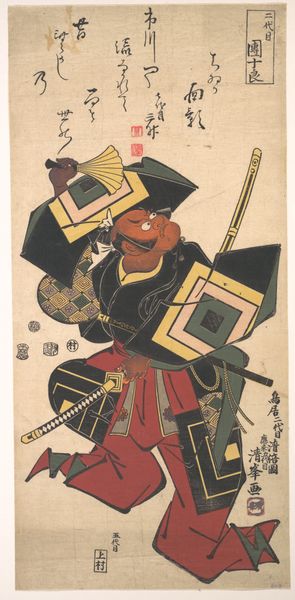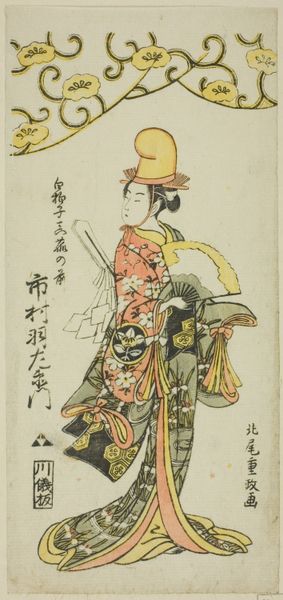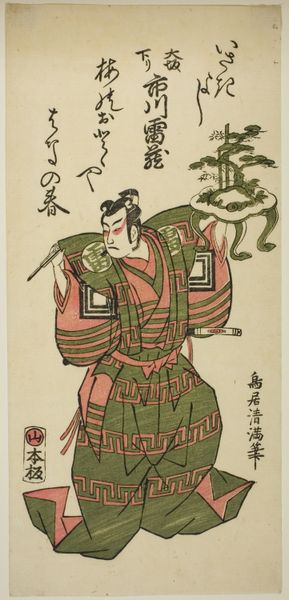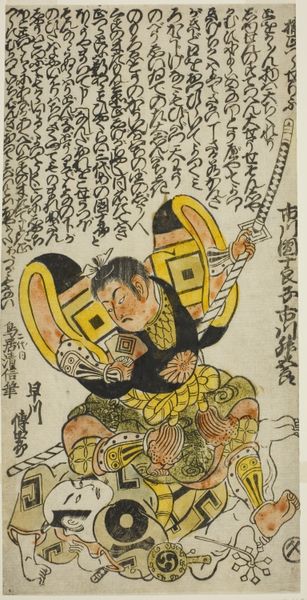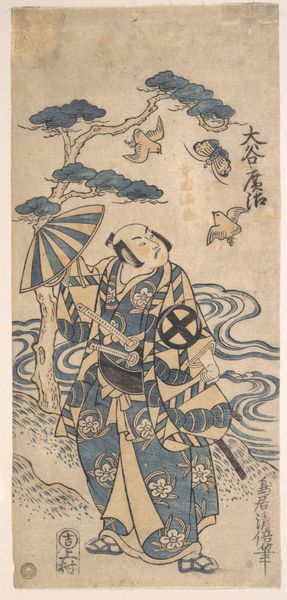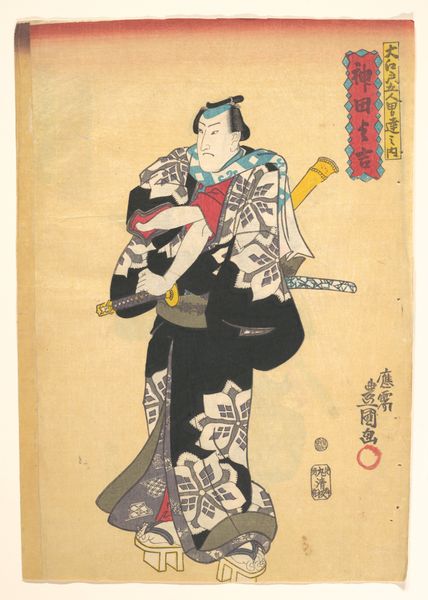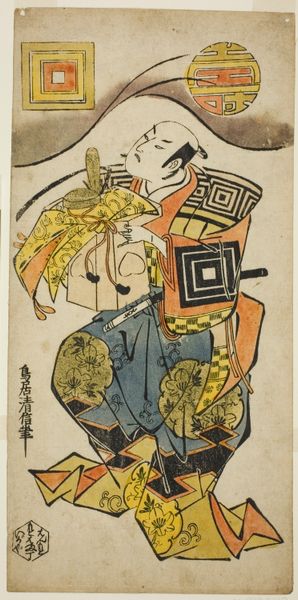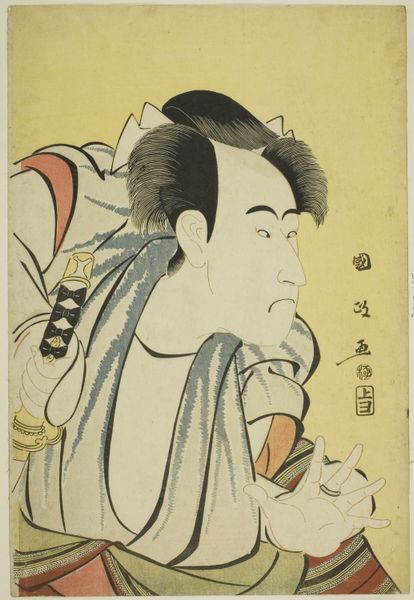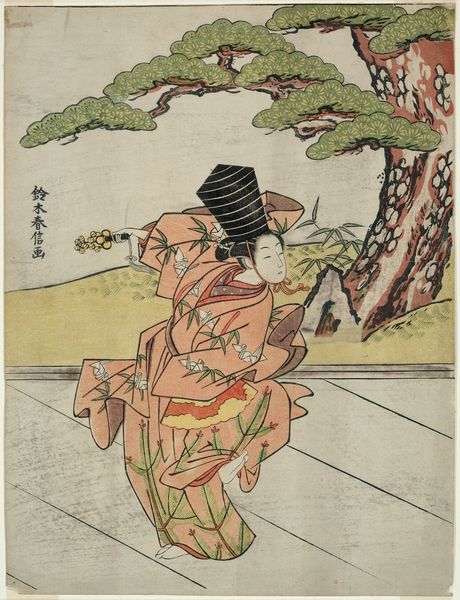
Dimensions: 15 7/8 x 11 9/16 in. (40.3 x 29.3 cm) (image, sheet)
Copyright: Public Domain
Editor: This woodblock print, "Yanone Gorō" by Kubota Beisen, dates to 1894. There's something about the figure's confrontational stare and the exaggerated pose that feels really powerful. How do you interpret this work, considering its historical context? Curator: This print offers a window into the Meiji era in Japan, a time of profound social and political transformation. The figure depicted, presumably a historical or mythical warrior, challenges conventional ideals. I wonder, could his defiant expression and powerful stance be read as a commentary on resistance against Westernization or a reimagining of traditional masculinity within a changing society? Editor: That's fascinating! So, you're seeing a possible critique of the societal pressures of that period embedded within the representation of a traditional figure? Curator: Precisely! Woodblock prints were a popular art form, accessible to a wide audience. Consider how Beisen might be engaging with anxieties surrounding identity, nationalism, and gender roles during this tumultuous period. The choice to depict such a strong, almost caricatured figure allows us to question and renegotiate the accepted standards of behavior of that time. What kind of message was the artist sending by portraying the man this way? Editor: I see! The print becomes more than just a portrait; it becomes a statement. It’s almost as if Beisen is using this image to open up a conversation about what it means to be Japanese in a rapidly globalizing world. I never thought of it that way. Curator: Exactly. Art is never created in a vacuum. By examining its historical context and cultural undertones, we can see the complex ways that art both reflects and shapes society. Editor: Thank you! Thinking about it this way has really transformed how I view this work. Curator: Indeed, considering the convergence of tradition and modernity in late 19th century Japan, prints like this take on deeper, more relevant meaning than is often seen on the surface.
Comments
No comments
Be the first to comment and join the conversation on the ultimate creative platform.
